Lee Harmon's Blog, page 133
April 7, 2011
John 18:28, When did Jesus die?
Then the Jewish leaders took Jesus from Caiaphas to the palace of the Roman governor. By now it was early morning, and to avoid ceremonial uncleanness they did not enter the palace, because they wanted to be able to eat the Passover.
//In Matthew, Mark and Luke, Jesus shares a final Passover meal with his disciples. Thus the first three Gospels imply that Jesus died on or after the Passover, but John's Gospel provides a different time line. In John, Jesus dies on the "day of Preparation" (see John 19:42). All four Gospels indicate that Jesus' body was rushed to the burial site before the Sabbath begins (6pm Friday evening), and this is where we get Good Friday and the idea that Jesus died on a Friday, but John's Gospel has changed this from a Saturday Sabbath into a "High Sabbath." John's "Sabbath" (day of rest) is the feast day of Passover, not Saturday. Nowhere is this more clear than in today's verse, which indicates that the trial of Jesus occurs before the Passover. Jesus is crucified that same day. There is no final Passover meal in John's Gospel; the Passover had not yet begun. So, in trying to figure out when Jesus died according to John, we must figure out the day of the week on which Passover occurred.
This is not as simple as it sounds, and there will not be universal agreement, but most scholars suspect that Jesus died in the year 30 CE. This agrees with Luke, who dates John the Baptist's public baptism to the fifteenth year of the reign of Tiberius--29 CE on our present Calender--and then, like the other two Synoptics, narrates about a year for the ministry of Jesus. Computer analysis of the Hebrew calendar places the Passover on a Thursday for the year 30 CE (though any such calculation is not a certainty). Thus John's Gospel indicates Jesus died the day before, which would be Wednesday, before 6 pm. (On the Hebrew calendar, the day always began and ended in the evening, as indicated in Genesis of a "day" being "an evening and a morning.")
Now comes a very interesting fact. John, you may recall, is the Gospel that says when Jesus spoke of the Temple being rebuilt, he spoke of his own body. This is one of John's most fascinating contributions to Christian theology. The book of Daniel indicates that the rebuilding of the Temple will be over a period of three and a half "days," which most theologians interpret to mean three and a half years. But if Jesus died just before sundown on Wednesday, and rose from the dead just before sunup Sunday, he was in the grave ... precisely three and a half days! According to John, we may lay to rest all of the ideas about the Temple being rebuilt in three and a half days/years as described in the book of Daniel, for Jesus has already fulfilled that scripture!
//In Matthew, Mark and Luke, Jesus shares a final Passover meal with his disciples. Thus the first three Gospels imply that Jesus died on or after the Passover, but John's Gospel provides a different time line. In John, Jesus dies on the "day of Preparation" (see John 19:42). All four Gospels indicate that Jesus' body was rushed to the burial site before the Sabbath begins (6pm Friday evening), and this is where we get Good Friday and the idea that Jesus died on a Friday, but John's Gospel has changed this from a Saturday Sabbath into a "High Sabbath." John's "Sabbath" (day of rest) is the feast day of Passover, not Saturday. Nowhere is this more clear than in today's verse, which indicates that the trial of Jesus occurs before the Passover. Jesus is crucified that same day. There is no final Passover meal in John's Gospel; the Passover had not yet begun. So, in trying to figure out when Jesus died according to John, we must figure out the day of the week on which Passover occurred.
This is not as simple as it sounds, and there will not be universal agreement, but most scholars suspect that Jesus died in the year 30 CE. This agrees with Luke, who dates John the Baptist's public baptism to the fifteenth year of the reign of Tiberius--29 CE on our present Calender--and then, like the other two Synoptics, narrates about a year for the ministry of Jesus. Computer analysis of the Hebrew calendar places the Passover on a Thursday for the year 30 CE (though any such calculation is not a certainty). Thus John's Gospel indicates Jesus died the day before, which would be Wednesday, before 6 pm. (On the Hebrew calendar, the day always began and ended in the evening, as indicated in Genesis of a "day" being "an evening and a morning.")
Now comes a very interesting fact. John, you may recall, is the Gospel that says when Jesus spoke of the Temple being rebuilt, he spoke of his own body. This is one of John's most fascinating contributions to Christian theology. The book of Daniel indicates that the rebuilding of the Temple will be over a period of three and a half "days," which most theologians interpret to mean three and a half years. But if Jesus died just before sundown on Wednesday, and rose from the dead just before sunup Sunday, he was in the grave ... precisely three and a half days! According to John, we may lay to rest all of the ideas about the Temple being rebuilt in three and a half days/years as described in the book of Daniel, for Jesus has already fulfilled that scripture!
Published on April 07, 2011 06:30
April 6, 2011
Book review: The Bible Code
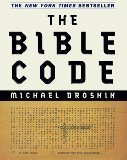
 by Michael Drosnin
by Michael Drosnin★
You knew I'd get to this book eventually, right? Well, I'm here to tell you it's absolutely brilliant. Drosnin is my idol. With a savvy grasp of human nature, a little computer programming, and a mathematician's insight into probabilities, he put together a best seller.
The book's premise is that the Bible contains a secret code, and that he has cracked the code to reveal its hidden messages. Simply start at any letter in the Bible, skip ahead a fixed number of letters to the next, and continue until it spells out … well, whatever you like. Start with the first T in Genesis, skip 49 letters to an O, skip 49 more to an R, 49 more to H. Lo and behold, you've spelled TORH, the Hebrew word for the first five books of the Bible. Miraculous, isn't it?
No, it's neither miraculous nor unexpected. As Keith Devlin demonstrated about a year after The Bible Code hit the bookstores, the word TORH appears 56,768 more times in the software, searching just the book of Genesis alone. TORH appeared in an issue of the Wall Street Journal 15,000 times. But might there be more impressive words than TORH? Yes, several! The first encoded phrase the book mentions is "Yitzhak Rabin," which he uncovers in Deuteronomy. Drosnin carefully lays out his analysis in matrix form so that it looks like a word find puzzle, and crossing Yitzhak Rabin is the phrase "Assassin that will assassinate." Need more evidence? The phrase "Rabin assassination" crosses "Tel Aviv" in the book of Exodus. Yep, that's where Amir assassinated Rabin. Oh, the name "Amir" appears in the book of Numbers.
A code of equidistant letters buried within the Bible is not a new idea. See Wikipedia for a full discussion. But with a little computer programming, Drosnin pushes it to the limit. He uncovers prophecies about Watergate, Hitler, Shakespeare's writings, Edison's inventions, the holocaust, Roosevelt, Kennedy, communism, Armageddon, and, amazingly, the promise of a future book named "Bible Code."
It all sounds convincing, until a little experimentation verifies the same probabilistic expectations in other works of literature. Moby Dick revealed much of the same prophecies and many more. So, mathematicians turned back to the Bible to see what else they could learn by the using the software. Several more startling prophecies surfaced: "Code is bunk." "Drosnin Fraud." "Darwin was right." Sigh.
Please don't read the book, but do gain inspiration from the genius of Drosnin. Millions of dollars are waiting for the next great sham.
(click picture to buy on Amazon)
Published on April 06, 2011 06:53
April 5, 2011
Genesis 6:4, the Nephilim
The Nephilim were on the earth in those days—and also afterward—when the sons of God went to the daughters of men and had children by them. They were the heroes of old, men of renown.
//In this verse, "sons of God" (usually understood as fallen angels) mate with human women, and produce a race of people known in the Bible as Nephilim. Who were the Nephilim, and what happened to them? The New Living Translation renders the name Nephilim as simply "giants." The name appears in the Bible in only one other location, in Numbers 13:33, when the Israelites arrive at the land of Canaan, and send spies in to scout the land. The report comes back of giants in the land:
We saw the Nephilim there (the descendants of Anak come from the Nephilim). We seemed like grasshoppers in our own eyes, and we looked the same to them."
It's little wonder the spies were terrified of the Nephilim. The presence of giants in the land of Canaan is verified by Amos 2:9, where God describes "the Amorite" as being "as tall as the cedars and strong as the oaks." Jude, verses 6-7, may also refer to the Nephilim when it compares the sin of fallen angels to the promiscuity of Sodom and Gomorrah. More can be learned about the Hebrew tradition of the Nephilim from the popular books of 1 Enoch and Jubilees. Both of these books are quoted as scripture in the New Testament; in particular, the book of Revelation can hardly be understood without tracing its many references to 1 Enoch. Here is a portion of what we learn from Enoch:
And it came to pass when the children of men had multiplied that in those days were born unto them beautiful and comely daughters. And the angels, the children of the heaven, saw and lusted after them, and said to one another: 'Come, let us choose us wives from among the children of men and beget us children.' And Semjaza, who was their leader, said unto them: 'I fear ye will not indeed agree to do this deed, and I alone shall have to pay the penalty of a great sin.' And they all answered him and said: 'Let us all swear an oath, and all bind ourselves by mutual imprecations not to abandon this plan but to do this thing.' Then sware they all together and bound themselves by mutual imprecations upon it. And they were in all two hundred; who descended in the days of Jared on the summit of Mount Hermon, and they called it Mount Hermon, because they had sworn and bound themselves by mutual imprecations upon it...
So where are the Nephilim today? Jubilees explains that the majority of them were swept away in the flood of Noah's day. Indeed, they were part of the reason for sending the flood. However, God allowed a portion to remain alive, as demons (disembodied spirits), to try and lead the human race astray, and these demons will remain until the Judgment Day.
//In this verse, "sons of God" (usually understood as fallen angels) mate with human women, and produce a race of people known in the Bible as Nephilim. Who were the Nephilim, and what happened to them? The New Living Translation renders the name Nephilim as simply "giants." The name appears in the Bible in only one other location, in Numbers 13:33, when the Israelites arrive at the land of Canaan, and send spies in to scout the land. The report comes back of giants in the land:
We saw the Nephilim there (the descendants of Anak come from the Nephilim). We seemed like grasshoppers in our own eyes, and we looked the same to them."
It's little wonder the spies were terrified of the Nephilim. The presence of giants in the land of Canaan is verified by Amos 2:9, where God describes "the Amorite" as being "as tall as the cedars and strong as the oaks." Jude, verses 6-7, may also refer to the Nephilim when it compares the sin of fallen angels to the promiscuity of Sodom and Gomorrah. More can be learned about the Hebrew tradition of the Nephilim from the popular books of 1 Enoch and Jubilees. Both of these books are quoted as scripture in the New Testament; in particular, the book of Revelation can hardly be understood without tracing its many references to 1 Enoch. Here is a portion of what we learn from Enoch:
And it came to pass when the children of men had multiplied that in those days were born unto them beautiful and comely daughters. And the angels, the children of the heaven, saw and lusted after them, and said to one another: 'Come, let us choose us wives from among the children of men and beget us children.' And Semjaza, who was their leader, said unto them: 'I fear ye will not indeed agree to do this deed, and I alone shall have to pay the penalty of a great sin.' And they all answered him and said: 'Let us all swear an oath, and all bind ourselves by mutual imprecations not to abandon this plan but to do this thing.' Then sware they all together and bound themselves by mutual imprecations upon it. And they were in all two hundred; who descended in the days of Jared on the summit of Mount Hermon, and they called it Mount Hermon, because they had sworn and bound themselves by mutual imprecations upon it...
So where are the Nephilim today? Jubilees explains that the majority of them were swept away in the flood of Noah's day. Indeed, they were part of the reason for sending the flood. However, God allowed a portion to remain alive, as demons (disembodied spirits), to try and lead the human race astray, and these demons will remain until the Judgment Day.
Published on April 05, 2011 06:44
April 4, 2011
Book review: Abraham
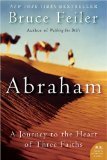
 by Bruce Feiler
by Bruce Feiler★★★★★
"So, Professor, what do we know about Abraham?" I asked.
"All we know about Abraham is in the Bible," he says. "In the ground, there is nothing."
This book is Bruce Feiler's best. With no archaeological evidence whatsoever to explore, he embarks on his journey to learn about Abraham by interviewing members of various faiths, and finds himself enmeshed in a bewildering array of legends and claims. Abraham begins life as a polytheist in Ur, but is called by a foreign god, Yahweh, to journey to a new land. The promise by this strange god? "All the families of the earth shall bless themselves by you." Various passages in the Bible retain echoes of this polytheism; Abraham is a transitional figure, with a foot in both worlds.
In this new land, two sons are born to Abraham, and God asks Abraham to sacrifice one of them as a test of his faith. So diverse are the legends about Abraham that there is not even agreement over which son is the requested sacrifice, but the Biblical account favors Isaac. This sacrifice—of whichever son—plays a major role in Judaism, Christianity, and Islam. Feiler writes, "Considering that I set out in search of what I thought was one Abraham at the heart of all three faiths, I was amazed by how much time I spent trying to figure out when one religion's Abraham ended and another began.
The Jewish religion appears to have seniority. "Long before Christians and Muslims set about reinterpreting Abraham, early Jews were the first to perform reconstructive surgery on their purported father." Feiler describes how the Israelites set about codifying their Bible, gathering and recording oral stories. Suddenly, Israel had scripture that described their ancestors, but what difference did that make? They still needed to make that text relevant to their lives. They needed midrash. Qumran provides excellent examples of Jewish midrash, and how Abraham was molded into their image.
Some years later, Christians entered the scene. In Paul's fourteen letters, he refers to Abraham nineteen times, more than any other figure except Jesus. But the idea that Abraham belongs to all humanity, which appears at least in spirit in Paul's letters, soon begins to dissipate. Matthew traces Jesus' lineage through Isaac to Abraham. God's sacrifice of his Son is compared directly to Abraham's sacrifice of Isaac. Abraham, says John, knew about Jesus thousands of years before Jesus was born. Abraham has been appropriated to the Christian side.
Hundreds of years later, Muslims trace their relevancy through Abraham's other son, Ishmael. Ibn Kathir accuses Jews of dishonesty and slander, claiming they introduced Isaac into the story, even though the Bible says Abraham went to sacrifice his only son, his favored son. For Muslims, Ishmael was the favored son, so he was the one Abraham took to sacrifice. As Feiler interviews a Muslim leader, he is told, "Abraham is the father of one religion, and that religion is Islam." "So what will happen to me?" Feiler asked. "You'll die," came the answer.
Thoroughly rattled, Feiler retreats. His book has become something entirely different than what he set out to write.
(click picture to buy on Amazon)
_________________________________________________________________
 A collage of mementos from my Jerusalem trip
A collage of mementos from my Jerusalem tripIn the latter half of the first century, John the Apostle prophesied, The great city split into three parts, and the cities of the nations collapsed. Could any description of Jerusalem have been more prophetic? Nearly 2,000 years later, Jerusalem has come no closer to becoming a "city of peace," after its namesake. It remains a haven of hatred divided by three factions, today the Jews, Muslims, and Christians who have warred over the Holy City since the time of the Crusades.
But if Abraham provided the road map of what had gone wrong among the religions, could he also provide a road map for how to make it right? Bruce Feiler at one point in his research opened the Bible to the moment when Isaac and Ishmael bury their father. "Is that a hopeful moment?" he asked. In September, 2002, Time magazine featured Abraham on its cover. "Jews, Christians, and Muslims all claim him as their father," the magazine proclaimed. Can he be their peacemaker? The effect was electrifying. Suddenly, interfaith relations became a hot topic among religious leaders.
It's a struggle for humanity we continue to fight. Please join me.
Published on April 04, 2011 06:00
April 3, 2011
John 7:41-43 Was Jesus Born In Bethlehem?
Others said, "He is the Christ." Still others asked, "How can the Christ come from Galilee? Does not the Scripture say that the Christ will come from David's family and from Bethlehem, the town where David lived?" Thus the people were divided because of Jesus.
//Two of the four Gospels, Matthew and Luke, provide birth stories for Jesus, and both describe Jesus' birth in Bethlehem. In Luke, Jesus' parents travel from Nazareth to Bethlehem for a census, and have the baby there. In Matthew, they appear to be living initially in Bethlehem, and only later settle in Nazareth. The two stories differ in other fundamental ways, but they agree on the most important point: Bethlehem.
A number of noted Historical Jesus scholars, however, insist that Jesus was more likely born in Nazareth. They find the two birth stories unconvincing, and suggest that both were crafted to explain how Jesus of Nazareth somehow fulfilled the prophetic expectation of birth in David's city of Bethlehem. Jesus was, after all, the proclaimed Messiah, the warrior figure promised through the ages, with the blood of the Hebrew hero David surging through his veins.
Enter today's verse. John's Gospel disagrees, and points out that Jesus' origins are in Galilee. The "people" are troubled, knowing Jesus' true origins, and knowing he didn't come from Bethlehem. This is one of many places where John contradicts the other Gospels, but this is one of the more serious contradictions. So implanted is the Bethlehem birth story among Christians today that we invariably read the Johannine verse sideways; we pity the poor "people" who didn't know the truth: That Jesus really did hail from Bethlehem! But John provides absolutely no hint of irony or contradiction in his story, and instead bolsters his argument by having the Jews say they know Jesus' Galilean origins!
The question is, why? Why does John take such pains to point out the fallacy of the Bethlehem birth? The answer, I believe, is rooted in John's theology of the Messiah. John is simply not interested in a Davidic warrior-type Messiah. John repeatedly compares Jesus not to David, but to Moses. John's Gospel, written some 20-30 years after Jerusalem was leveled by the Romans, has given up on a political uprising and the restoration of the Jewish nation; he is ready to move on with his life.
//Two of the four Gospels, Matthew and Luke, provide birth stories for Jesus, and both describe Jesus' birth in Bethlehem. In Luke, Jesus' parents travel from Nazareth to Bethlehem for a census, and have the baby there. In Matthew, they appear to be living initially in Bethlehem, and only later settle in Nazareth. The two stories differ in other fundamental ways, but they agree on the most important point: Bethlehem.
A number of noted Historical Jesus scholars, however, insist that Jesus was more likely born in Nazareth. They find the two birth stories unconvincing, and suggest that both were crafted to explain how Jesus of Nazareth somehow fulfilled the prophetic expectation of birth in David's city of Bethlehem. Jesus was, after all, the proclaimed Messiah, the warrior figure promised through the ages, with the blood of the Hebrew hero David surging through his veins.
Enter today's verse. John's Gospel disagrees, and points out that Jesus' origins are in Galilee. The "people" are troubled, knowing Jesus' true origins, and knowing he didn't come from Bethlehem. This is one of many places where John contradicts the other Gospels, but this is one of the more serious contradictions. So implanted is the Bethlehem birth story among Christians today that we invariably read the Johannine verse sideways; we pity the poor "people" who didn't know the truth: That Jesus really did hail from Bethlehem! But John provides absolutely no hint of irony or contradiction in his story, and instead bolsters his argument by having the Jews say they know Jesus' Galilean origins!
The question is, why? Why does John take such pains to point out the fallacy of the Bethlehem birth? The answer, I believe, is rooted in John's theology of the Messiah. John is simply not interested in a Davidic warrior-type Messiah. John repeatedly compares Jesus not to David, but to Moses. John's Gospel, written some 20-30 years after Jerusalem was leveled by the Romans, has given up on a political uprising and the restoration of the Jewish nation; he is ready to move on with his life.
Published on April 03, 2011 07:26
April 2, 2011
Book review: Satan, a Biography
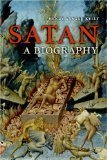
 by Henry Ansgar Kelly
by Henry Ansgar Kelly★★★★
A strange book; I'm not entirely sure what to make of it. Kelly's premise, and he is quite serious, is that Satan is a badly misunderstood fellow. That the Satan we know today bears little or no resemblance to the Biblical Satan.
As far as I can tell, Kelly is a believer in the Bible and in Satan, and wants to set the record straight. He doesn't appreciate the legends that have sprung up about Satan since the writing of the Bible. Satan, for example, has nothing to do with the serpent in the Garden of Eden; that association began with the early church fathers. He has not yet been thrown out of heaven. He is not evil, and certainly will not be put in charge of punishing the damned in Hell.
Rather, Satan is merely an Accuser, and a useful one at that. Kelly begins with the oldest Biblical books, travels through the Septuagint translation and inter-testamental writings such as 1 Enoch and Jubilees, and wraps up the first half of his book with the Dead Sea Scrolls and the New Testament. In these writings, we see the picture of Satan remaining largely unchanged: Satan is a functionary of the Divine Government, charged with testing and disciplining mankind. He is suspicious of everyone, including Jesus. He is hostile to Jesus' followers, constantly trying to trip them up and then lodge complaints against them before God. He is God's Chief Tester, at worst a homicidal liar.
Then in the second half, Kelly methodically traverses the next 2,000 years and how Satan's name has been corrupted.
I agree with Kelly that the understanding of Satan/Devil/Lucifer has evolved quite radically. I'm just not sure I agree with his timing. For example, I think Satan had evolved into God's adversary in the minds of most believers before the New Testament was written, and I think the same about Satan's connection with the serpent of Eden. Moreover, different Biblical writers appear to have had different ideas. I just don't think the line is as crisp as Kelly draws. Nevertheless, it's a book to make you think, and though the writing is a bit dry, I did enjoy the discussion, so I'll give it four stars.
(click picture to buy on Amazon)
Published on April 02, 2011 07:22
April 1, 2011
Numbers 21:25-26, The Conquest of Heshbon
And Israel took all these cities: and Israel dwelt in all the cities of the Amorites, in Heshbon, and in all the villages thereof. For Heshbon [was] the city of Sihon the king of the Amorites.
//While the Israelites were led through the wilderness by Moses, messengers were dispatched to Sihon, king of the Amorites, requesting permission to pass through their land. But Sihon refused the request, and formed an army to fight with Israel. Moses and the Israelites won the battle, and occupied the city of Heshbon.
Archaeological excavations at the site of Heshbon, however, show no habitations before 1200 B.C. Any establishment of a local empire would have to have occurred long after Moses passed through. This battle over Heshbon simply could not have happened.
What's most odd about this particular myth is that eleven chapters later, this same book of Numbers confirms the mythical nature of its earlier story by telling how, after the conquest of Canaan, the city of Heshbon was built by the tribe of Rueben!
Numbers 32:37, And the children of Reuben built Heshbon, and Elealeh, and Kirjathaim
//While the Israelites were led through the wilderness by Moses, messengers were dispatched to Sihon, king of the Amorites, requesting permission to pass through their land. But Sihon refused the request, and formed an army to fight with Israel. Moses and the Israelites won the battle, and occupied the city of Heshbon.
Archaeological excavations at the site of Heshbon, however, show no habitations before 1200 B.C. Any establishment of a local empire would have to have occurred long after Moses passed through. This battle over Heshbon simply could not have happened.
What's most odd about this particular myth is that eleven chapters later, this same book of Numbers confirms the mythical nature of its earlier story by telling how, after the conquest of Canaan, the city of Heshbon was built by the tribe of Rueben!
Numbers 32:37, And the children of Reuben built Heshbon, and Elealeh, and Kirjathaim
Published on April 01, 2011 07:30
March 31, 2011
Book review: Christianity, How a Tiny Sect From a Despised Religion Came to Dominate the Roman Empire
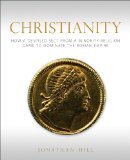
 by Jonathan Hill
by Jonathan Hill★★★★★
Wow! This one belongs on my favorites list. I fell in love with this book before I began reading; it's beautiful enough for the coffee table, and scholarly enough for the library.
Thankfully, the writing lives up to the presentation! Hill's work is enjoyable, frank and immensely informative, making for a hard book to put down. I'm reminded of another book I enjoyed: J.R. Porter's treatment of the historical Jesus ( http://www.dubiousdisciple.com/2011/02/book-review-jesus-christ-jesus-of.html ). Hill picks up where Porter left off, tracing the first four centuries of Christianity's roots, and how it survived persecution, internal strife, and pagan and imperial competition. Along the way, you'll meet the church fathers and the early monks, you'll relive the struggle to define the Trinity, and you'll get to know the emperors who left their mark upon Christianity, including, of course, the infamous Constantine. You'll meet the Donatists, the Arians, and more. And peppered throughout the book are pictures of ruins, artifacts, maps, and Christian artwork.
I can vouch for Hill's careful scholarship for the initial chapters, where he discusses first-century history, but I confess I'm no scholar of the next three hundred years, so I won't guarantee the book's historical accuracy; I can claim, however, that I learned far more about this period from this book than I have in past studies, and enjoyed the experience much more! Hill brings the characters and controversies alive. My favorite part of the book was digging inside the minds of the early apologists, such as Justin Martyr and Origen. It left me wanting more, and searching the internet for more books by Jonathan Hill.
(click picture to buy on Amazon)
Published on March 31, 2011 06:02
March 30, 2011
Matthew 25:35, the slaying of Zacharias
That upon you may come all the righteous blood shed upon the earth, from the blood of righteous Abel unto the blood of Zacharias son of Barachias, whom ye slew between the temple and the altar.
//In this verse, Jesus curses Jerusalem for stoning the prophets, and in the next, promises that the prophecies of bloodshed will come upon "this generation." If you know your first-century history, you know Jesus was right. The Jewish historian Josephus describes this very act of slaying Zacharias, perhaps 35 years after Jesus made the proclamation: "So two of the boldest of them fell upon Zacharias [the son of Baruch] in the middle of the temple, and slew him." This occurred in the court of the priests, which is between the temple proper and the altar, just as Matthew relates.
Can you imagine being poor Zacharias, hearing this prophecy? If I were him, I'd stay the heck away from the Temple for the rest of my life!
But why does Jesus make this claim in the past tense? "Whom ye slew," rather than "whom ye will slay." Is it because, at the time the Gospel of Matthew was written, the event had already happened? Most scholars estimate that Matthew was written around 80-85 A.D.
Which naturally begs the question: Did Jesus really utter this prophecy, or did Matthew put the words on Jesus' lips after it had happened? As always, there are two ways to read and date the Bible; historical-critical scholars will invariably date the books of the Bible after the events they predict, and conservative believers will invariably date the books of the Bible before the events they predict. No wonder Bible scholars can never agree.
//In this verse, Jesus curses Jerusalem for stoning the prophets, and in the next, promises that the prophecies of bloodshed will come upon "this generation." If you know your first-century history, you know Jesus was right. The Jewish historian Josephus describes this very act of slaying Zacharias, perhaps 35 years after Jesus made the proclamation: "So two of the boldest of them fell upon Zacharias [the son of Baruch] in the middle of the temple, and slew him." This occurred in the court of the priests, which is between the temple proper and the altar, just as Matthew relates.
Can you imagine being poor Zacharias, hearing this prophecy? If I were him, I'd stay the heck away from the Temple for the rest of my life!
But why does Jesus make this claim in the past tense? "Whom ye slew," rather than "whom ye will slay." Is it because, at the time the Gospel of Matthew was written, the event had already happened? Most scholars estimate that Matthew was written around 80-85 A.D.
Which naturally begs the question: Did Jesus really utter this prophecy, or did Matthew put the words on Jesus' lips after it had happened? As always, there are two ways to read and date the Bible; historical-critical scholars will invariably date the books of the Bible after the events they predict, and conservative believers will invariably date the books of the Bible before the events they predict. No wonder Bible scholars can never agree.
Published on March 30, 2011 07:24
March 29, 2011
Book review: GOD: The Evidence
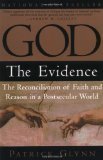
 by Patrick Glynn
by Patrick Glynn★★★★★
This is a book by a believer-turned-atheist-turned-believer. Glynn explains, "After many years of being a philosophical atheist or agnostic, I finally realized that there was in fact a God." He then leads us on a journey through various lines of thought that eventually coalesced into what he found to be overwhelming evidence for God's existence. Some quotes and conclusions:
· The non-random universe: "How does one explain that the laws of physics fit so perfectly within the fifteen-billion-year project of creating life?"· The psychological benefits: "It is difficult to find a more consistent correlative of mental health, or a better insurance against self-destructive behaviors, than a strong religious faith."· The medical benefits: "Contemporary medical research is showing that the human mind and body are 'wired for God.'"
Glynn next dives into near-death experiences, which are conclusive enough for him to now believe that life continues after death. He touches on healing power of prayer and the unconquerable spirit of man. He reaches the conclusion that faith is not grounded in ignorance; it is where reason has been leading us all along.
Glynn is not a scientist, nor a physician, and none of these topics are presented in detail; instead, what he presents is enough frosting to make you think, to make you want to dig deeper into the evidence. I admit, I found nothing in the book directly addressing whether the God of the Bible exists, but the book struck a chord with me because I've also spent a number of years researching many of the same topics. I've shelves of books about cosmology, near-death experiences, and religious philosophy. Unfortunately, I remain a Dubious Disciple, but this book was a well-written and thought-provoking read.
(click picture to buy on Amazon)
Published on March 29, 2011 07:01



